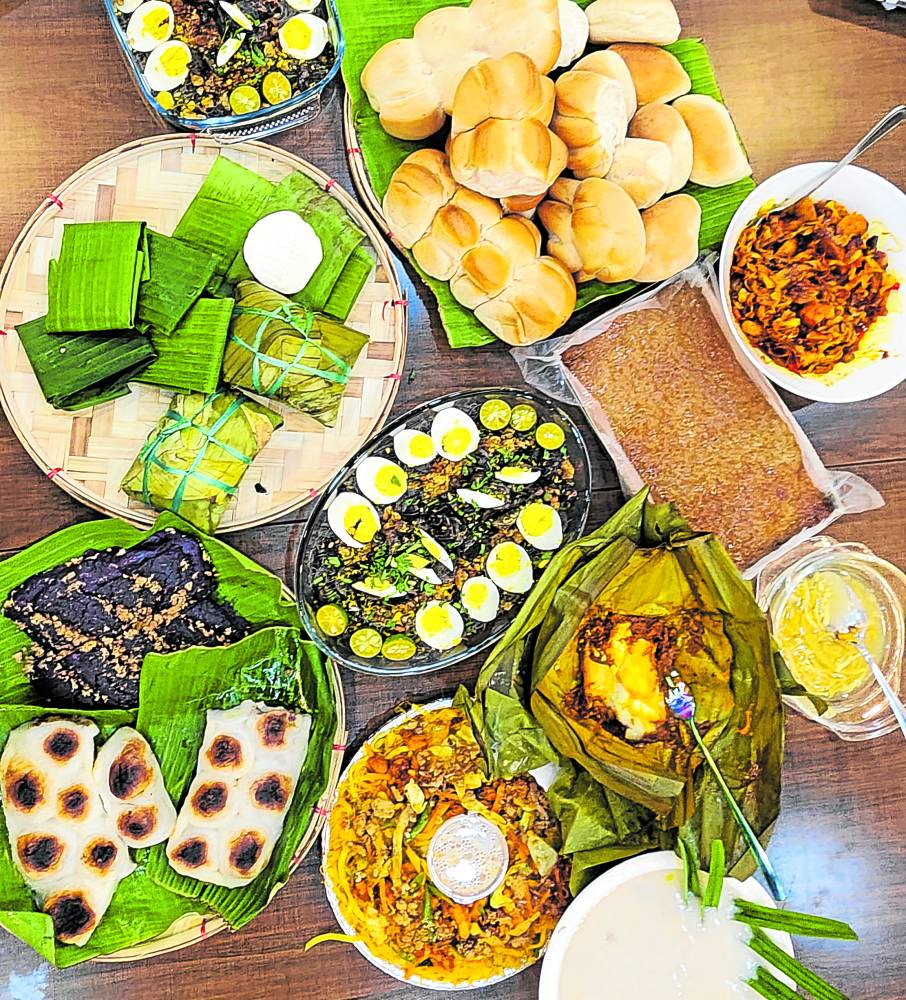
It was a brisk drive to Cavite, thanks to the expressways that bring us closer to our neighboring provinces.
Traveling for food is exciting, especially when delicacies of the province come together, waiting to be explored and devoured.Cavite City mayor Denver Chua received us, eager to share the many new and exciting developments the city has to offer. But before he did, he prepared a table full of treasured Cavite fare.
Cavite’s cuisine is shaped by its history, influenced by the Chinese, Malay, Spanish, Mexican, American and Japanese.
Cavite’s food is a rich mix, a hodgepodge of sorts, shaped by its distinct terroir, defined by the days of the galleon trade, nuanced by the American base at Sangley and made distinct by the unique local fare that existed long before colonization.
‘Pan antiguo’
Marvin Carandang, principal of the St. Gregory College of Science and Technology, took charge of the spread. According to him, keeping the traditional food of the Caviteños alive remains his top priority at their learning institution, where Home Economics and HRM courses are offered.The bilao full of pan antiguo caught my eye. It was intimated by Carandang that wood-fired kiln-baked breads are a dying delicacy.
There is a special lure to old-fashioned breads—a light smokiness, a distinct crumb. Breads from days of old have a magical bite and texture so unique and so nostalgic. Savoring it brings you back in time, making these wood-fired oven-baked gems irreplaceable.
I particularly favored the pan de limon. It was dense, chewy and yet so soft. It was delicious! It is called such because when ripped apart, each piece of bread resembles a lemon.There was pan de ración (that to my eye was akin to monay) that comes as a loaf but is, in fact, six buns. Carandang shared that it got its name from the pulling action required to get a piece, a portion, a ration—thus pan de ración.There too was old-fashioned pugon pan de sal served alongside Cavite’s kesong puti, the quesillo.
‘Pancit’
Two of their popular pancits were presented, both of which depict the customary eating habits of the Caviteños called terno-terno (perfect pairing) and tono-tono (in tune).
The pancit puso is a savory dish made with bihon tossed in achuete oil, pork slices and the usual pancit vegetables like beans, cabbage and carrots. The dish is transformed when capped with banana blossoms pickled in vinegar—the classic pampaasim, in place of the ubiquitous calamansi.
The pancit choca is made with sotanghon tossed in a mixture of squid, its ink, vinegar, seasonings and aromatics. The perfect terno for it are green kamias slivers.
My personal favorite was the tamales. Carandang said that it was delicious sandwiched in pan de sal. But it was already so good as it was.
The tamales is a combination of glutinous rice flour and peanuts, annato, hard boiled eggs, garbanzos, pork and chicken wrapped in copious amounts of banana leaves. It was sweetish, nutty and so satisfying.

‘Bacalao’
That bacalao made by Carandang was clean-tasting and exquisite!
A Cavite Good Friday staple, bacalao is paired with grated green mangoes, or burong mango and rice. What was once made with Basque salted cod is today more often prepared with salted daing na labahita or daing na lapu-lapu tinged with achuete oil.
Kakanin are aplenty in Cavite. According to my dear friend, famed author, culinarily historian and Cavite food expert Ige Ramos, kakanin are rooted in Fujian, China, where the tangyuan glutinous rice balls are served during the Lantern Festival and Chinese New Year.
Ramos pointed out the tangyuan recipe is the basis of our beloved palitaw and bilo-bilo.
That said, Cavite’s bibingkoy, another delicacy that tickles my fancy, is an adaptation of the palitaw, though this is stuffed with mashed sweetened green monggo that’s toasted and slathered with a ginataan sauce made with gata, langka, bilo-bilo and sago.
There was of course the delectable bibingka Samala, a combination of malagkit rice, panocha, coconut milk over banana leaves, that smelled as good as it tasted.
There is no doubt that Cavite is culinarily rich.
When I asked Ramos what his thoughts were on Cavite cuisine, he said, “Cavite cuisine is under the radar. We don’t need to be validated as a culinary capital or creative city for gastronomy. All we care about is food security so we can continue to cook and eat our heirloom cuisines.”
It was time for Mayor Denver to expound on the reasons why we must all visit Cavite. With pride, he said that a ferry route has been established between Cavite City and Corregidor, and will be operational in June.
He encouraged local tourists to visit Cavite, immerse themselves in the local sites and have a fill of their native cuisine.
He said, “Spend the evening with us and take the ferry in the morning for a day tour of Corregidor.”
A floating museum, a multi-level ship that will house artifacts and memorabilia of the city is being curated. Aboard the ship will be a floating restaurant that will highlight all the deliciousness Cavite has to offer.
The museum will be ready (hopefully) in time for Christmas.
Indeed, happy days are here again for the City of Cavite!
www.reggieaspiras.com; @iamreggieaspiras on IG & FB













































